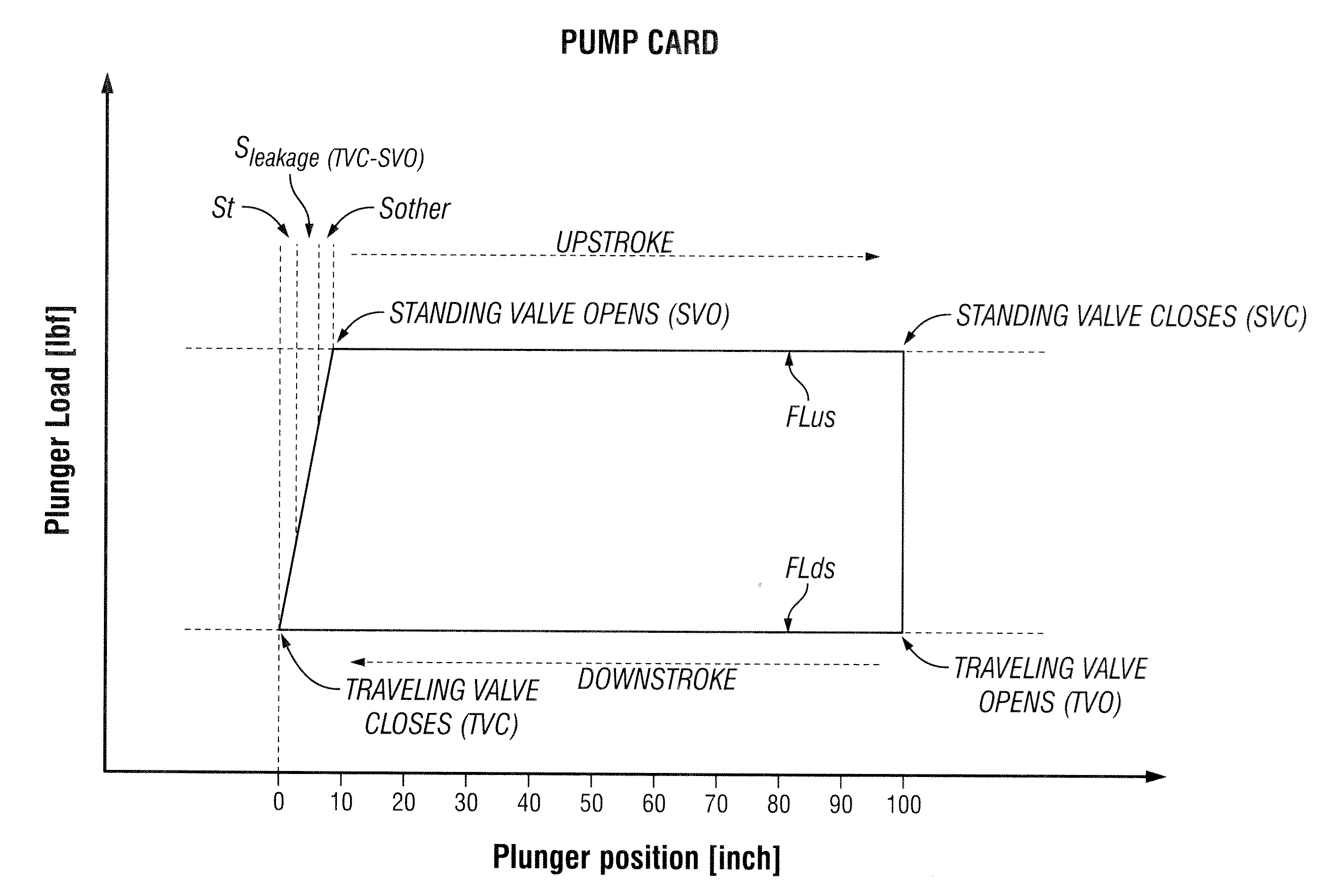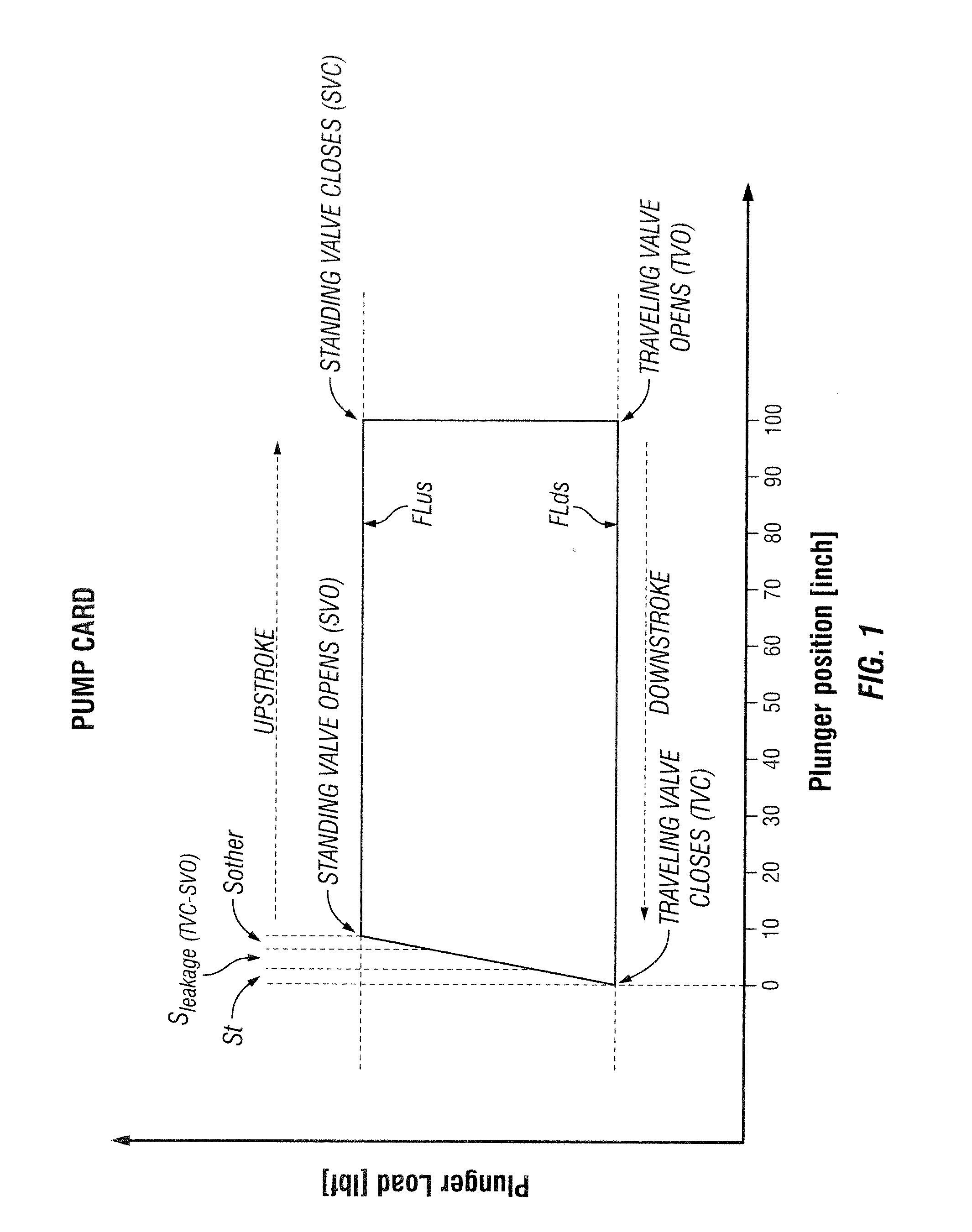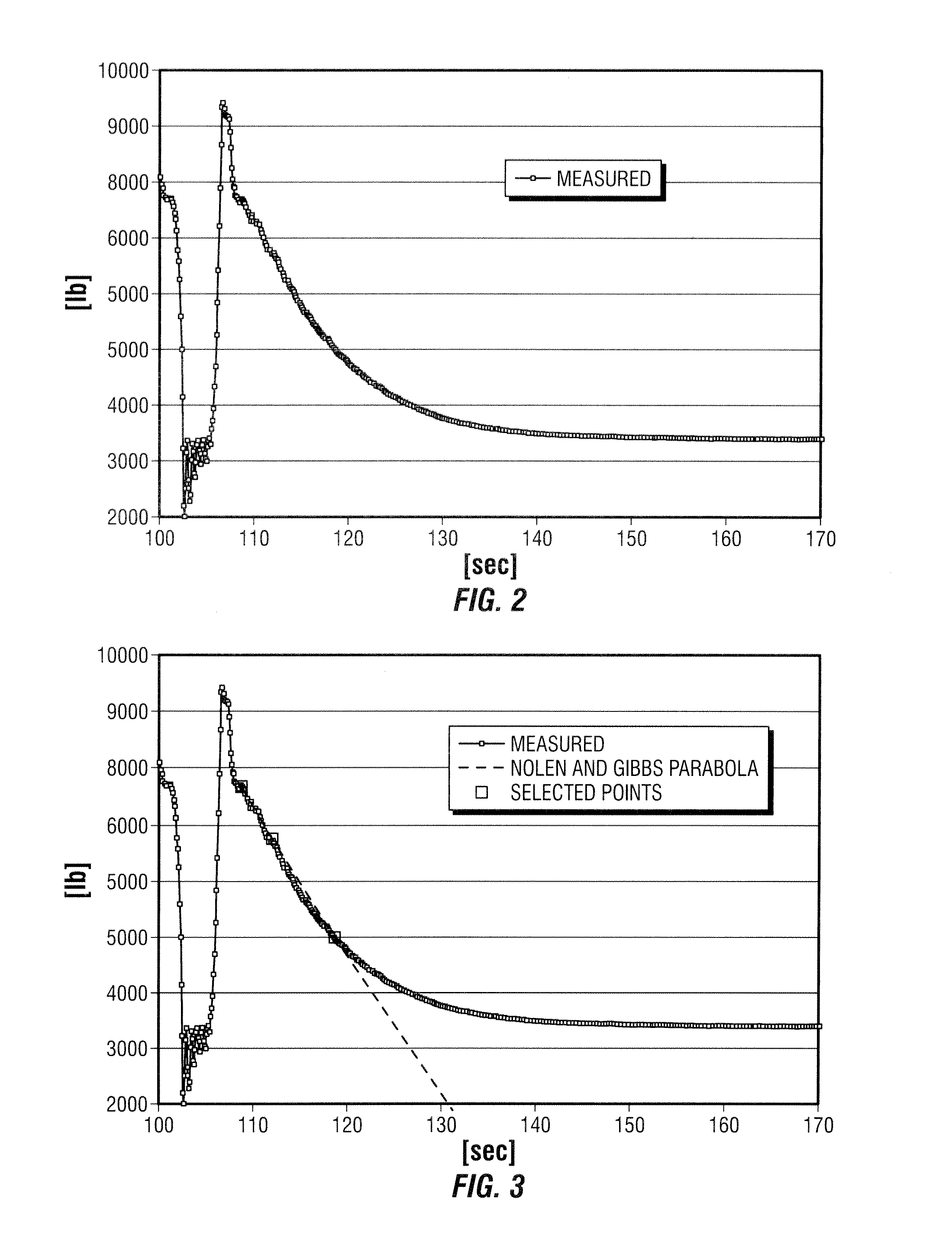Methods for measuring leakage rate and inferring production rate of an oilfield downhole pump
a technology of leakage rate and production rate, which is applied in the direction of instruments, borehole/well accessories, surveys, etc., can solve the problems of high cost of design and maintaining facilities to separate and measure these mixtures for each well, the production test method described above is far from ideal, and the test metering system is expensive to construct and maintain. , to achieve the effect of improving the accuracy of determining the traveling valve/plunger
- Summary
- Abstract
- Description
- Claims
- Application Information
AI Technical Summary
Benefits of technology
Problems solved by technology
Method used
Image
Examples
Embodiment Construction
[0099]Estimating Leakage Rate from a Traveling Valve Check
[0100]One aspect of the invention includes a method for interpreting the “traveling valve test”. This test is performed by stopping the pumping unit during the upstroke and measuring load on the polished rod vs time. See the upstroke portion of the pump illustrated in FIG. 1. See also FIGS. 6A and 6B which illustrate a full pump card and plunger positions and plunger loads during a pump cycle.
[0101]See also FIGS. 8A and 8B which illustrate a pump card and plunger movement for a downhole pump with early standing valve closing.
[0102]FIGS. 9A and 9B illustrate a pump card and plunger movement for a downhole pump with incomplete fillage.
[0103]There is general agreement among theoretical investigators that instantaneous plunger traveling valve leakage rate is proportional to pressure differential across the pump, or:
Qleakage=Cx*ΔPplunger (1)[0104]where,
Qleakage is the instantaneous plunger / traveling valve leakage rate,
ΔPplunger i...
PUM
 Login to View More
Login to View More Abstract
Description
Claims
Application Information
 Login to View More
Login to View More - R&D
- Intellectual Property
- Life Sciences
- Materials
- Tech Scout
- Unparalleled Data Quality
- Higher Quality Content
- 60% Fewer Hallucinations
Browse by: Latest US Patents, China's latest patents, Technical Efficacy Thesaurus, Application Domain, Technology Topic, Popular Technical Reports.
© 2025 PatSnap. All rights reserved.Legal|Privacy policy|Modern Slavery Act Transparency Statement|Sitemap|About US| Contact US: help@patsnap.com



